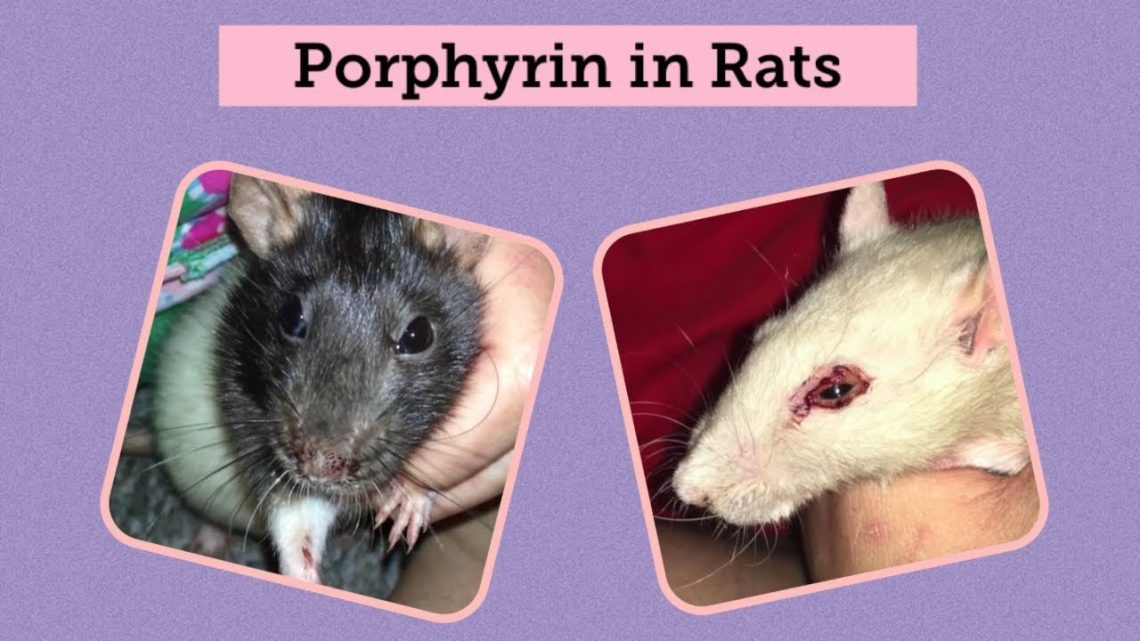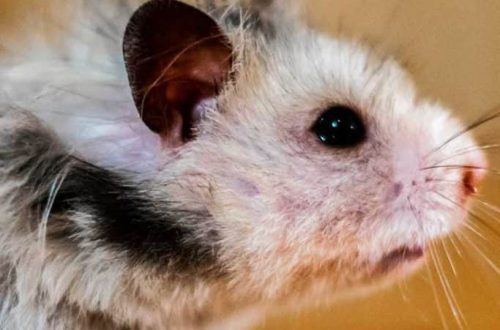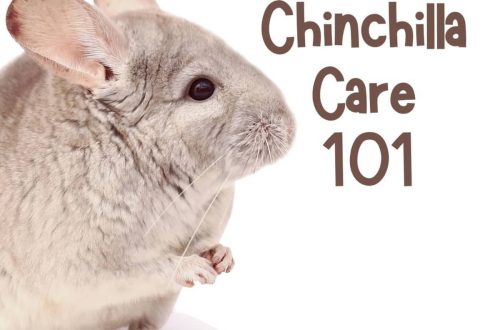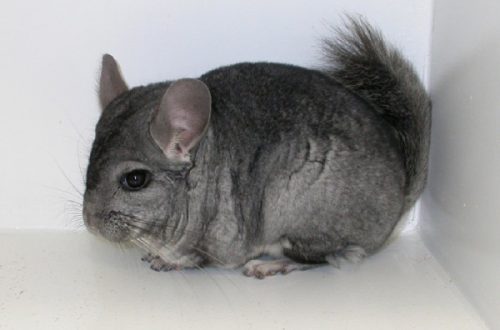
Porphyrin in rats: why the nose and eyes bleed
Care and custody of a domestic rat for many lovers of these smart rodents becomes a favorite and enjoyable thing. Sometimes the owner notices red-brown eye discharge or the nose of a fluffy pet that looks like dried blood clots. Such phenomena cause anxiety and panic among novice rat breeders, who associate such red discharge с near-death state of an adored pet or serious head injuries. Most often, the dried brown liquid is not blood, but porphyrin, the appearance of which is due to stressful situations or the presence in the body decorative rat serious pathologies.
Contents
What is porphyrin in rats
Porphyrin – this is the secret of Garder’s (Hardarian) gland, the main function of which is regular lubrication of the nictitating membrane to protect the eyes of a decorative rat from direct exposure to bright light or adverse environmental conditions, that is, the action of the secret ensures the blinking of the eyes of a domestic rodent. Experimentally, an increase in the production of porphyrin in laboratory rats was revealed in response to an increase in the intensity of bright lighting.
Outwardly, the secret of the Hardarian gland looks like a liquid brown-red substance, strongly resembling the blood of a rodent. The chemical structure of porphyrin is a carbon-nitrogen organic compound that is part of most living cells of plant and animal organisms. The liquid secretion produced is stored in the guard gland, which in domestic rats is located in the inner corner of the eye orbit. Porphyrin envelops the eyes of the rat and flows into the nose through the nasolacrimal canals of the animal; with increased secretion, the pet can stain the fur around the eyes and nose with red secretion when washing.
The production of porphyrin is a protective physiological process, the secretion intensity of which directly depends on the age of the pet: in young animals up to a year old, increased secretion production is observed, in rats older than two years, iron secretes a reduced amount of fluid.
A disease of tame rodents in which there is an increase in the secretion of the secretion of the Harder gland is called porphyrin in rats. If the animal looks healthy, eats well and plays actively, there is a one-time slight increase in secretion, then porphyrin treatment rats are not required. A large amount of brown-red discharge, reminiscent of a bloody runny nose or tears, as well as severe lethargy, apathy, refusal to eat, and other associated symptoms signal serious disorders in the pet’s body and require an urgent visit to a veterinarian.
In what cases does the release of porphyrin increase in ornamental rats
The increased secretion of the Hardarian gland in the rat body occurs for four main reasons:
- Stress. Stressful situations for a domestic rodent can be the usual fright from loud sounds, an unfamiliar room, bathing, moving, planting new pets, annoying attention of owners or other animals, sudden awakening from noise;
- Pain. The production of secretion increases against the background of a pinched nerve as a result of blows, bruises, bites, falls from a height and other injuries;
- disease. The secretion of the hardarian gland increases against the background of pneumonia, mycoplasmosis, diphtheria, salmonellosis;
- Violation of feeding and maintenance: the use of sweets, raw potatoes, beans and cabbage, green bananas, fried spicy meat in the diet of a decorative rat, lack of water, the location of the cage near sources of bright light and electromagnetic radiation.
Clinical picture of porphyrin in domestic rats
The owner of a tame rodent should be alert and show the pet to a veterinarian if the animal has the following symptoms:
- bloody nose;
- bloody eyes;
- lethargy, apathy, inactivity, refusal to eat;
- hunched back, unnatural lying postures;
- the coat is dull, disheveled, in some places there are areas of baldness;
- skin peeling;
- contaminated genitals;
- violation of coordination of movements;
- progressive weight loss.
The owner must remember that excessive production of porphyrin speaks of hidden pathologies in the body, which can be cured only with timely access to a veterinary clinic and the appointment of appropriate treatment.
Treatment of porphyrin in ornamental rats
Diagnose an unpleasant disease and to treat fluffy a rodent should be a specialist in a veterinary clinic after an examination and laboratory tests of blood, urine and feces to determine the cause of the pathology.
Cure porphyrin in rat is possible only with an integrated approach aimed at improving the conditions of feeding and keeping, eliminating stressful situations and using symptomatic therapy. If serious infectious or inflammatory diseases, injuries and damage to the mucous membranes are detected, the animal is prescribed a course of antibacterial, vitamin, immunostimulating and anti-inflammatory drugs.
The rodent cage must be placed in a quiet, warm place away from sources of bright light and electromagnetic radiation; Active games and learning new tricks during the period of illness should be postponed until the pet is fully recovered.
The animal must be fed with healthy nutritious food with the addition of fresh herbs; the use of foods prohibited for rats in the diet is not allowed. With the elimination of the cause and improvement of the conditions of feeding and maintenance, a successful recovery of the pet is observed.
Porphyrin Prevention in Domestic Rats
In order to avoid the occurrence of a disease in a tame rodent, the owner must observe preventive measures:
- the cage should be away from sources of noise, bright light and electromagnetic radiation;
- the pet must be fed a balanced diet using vitamin supplements;
- it is desirable to treat inflammatory and infectious diseases in a rodent in time.
How to distinguish porphyrin from blood
If clots of dried blood are found in a domestic rat in the eyes or nose of an animal, porphyrin can be distinguished from blood at home using a conventional 3% hydrogen peroxide solution. To do this, you need to carefully remove the red discharge from the pet’s face with a cotton pad and drop a drop of hydrogen peroxide onto the cotton. Porphyrin does not dissolve under the influence of a chemical solution. If the liquid foams and changes color, this indicates bloody discharge in the pet if the mucous membranes are damaged or inflammatory processes.
In a situation where the test showed the presence of blood in the discharge and the pet has red-burgundy hair around the nose, it is necessary to find out Why do rats have nosebleeds? This condition can develop as a result of:
- mechanical microdamages of the nasal mucosa;
- drying of the mucous membrane with a sharp increase or decrease in the air in the room;
- hypovitaminosis with insufficient content of vitamin C and K in the diet of a rodent;
- pet overheating;
- a sharp pressure drop;
- hormonal and metabolic disorders.
Rat nosebleed can be a very serious symptom of edema or lung abscess, as well as cardiovascular failure. If the blood is abundant flowing from the nasal passages, the animal sneezes strongly with bloody secretions, suffocates, falls on its side, gasps for air with its teeth, urgent resuscitation is necessary. The animal in such cases may die suddenly before veterinary care is provided.
If a domestic rodent bloody eyes and a test with a solution of hydrogen peroxide confirmed the presence of blood in the eye secretions, it is necessary to show the animal to a specialist. The rat is bleeding from the eye may indicate various pathological conditions, such as:
- corneal injury;
- high blood pressure, with a strong current – increased intraocular pressure;
- neoplasm in the brain or intraocular tumor;
- acute conjunctivitis;
- glaucoma.
Severe bleeding from the nose and eyes requires immediate contact with a specialist in order to avoid the death of a decorative rat from blood loss.
Porphyrin in rats (blood from the nose and eyes): symptoms and treatment
3.7 (74.78%) 46 votes





